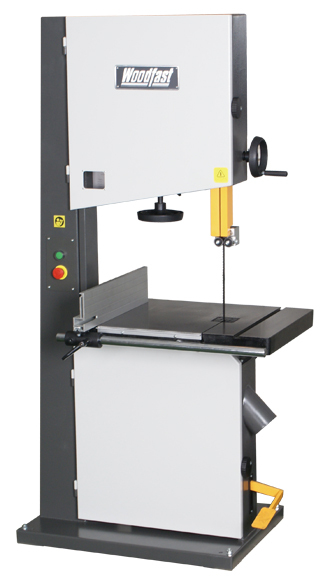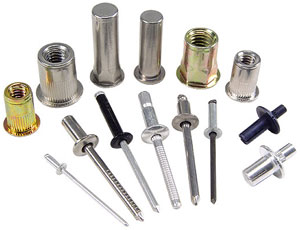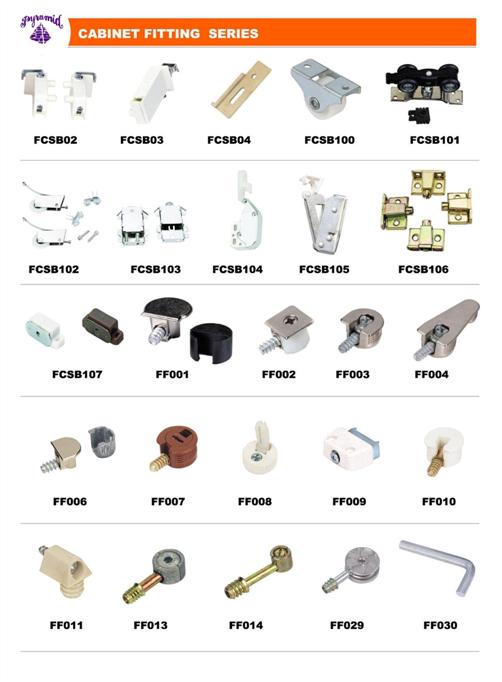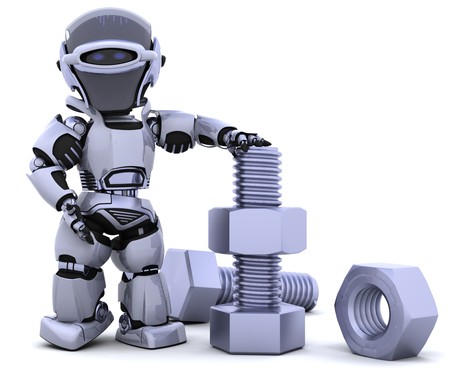Designers sometimes engineer products in such a way that they are easy to manufacture. Design for manufacture (DfM) exists in almost all engineering disciplines, but differs greatly depending on the manufacturing technologies used. This practice not only focuses on the design of a product’s components, but also on quality control and assurance.
Advancements in 3D printing have resulted in the ability to have a 3D printer at home. Consumers can download plans for products from the internet and print these products themselves.
Design for manufacture (DfM)
- Design for manufacture – Designers design specifically for optimum use of existing manufacturing capability.
- Therefore if a company has injection moulders available then the designer designs the product with that manufacturing machine in mind – i.e. considers the material needed (thermoplastic) and its related properties and workability.
Additive Techniques
Are manufacturing techniques that add material in order to create a product or component.
3D printing has rapidly advanced and become affordable which has resulted in the ability to have a 3D printers at home.
- Consumers can download plans for products from the internet and print these products themselves.
- Simple CAD software is more understandable these days so consumers can design and print custom parts.
| https://www.youtube.com/watch?v=LafffSXHNFY |
- It lays sheets of regular office paper and cuts out the shapes.
- Description from Medium
- Materials used: ummh Paper!
- Design contexts include: photo-realistic concept and presentation models, design and ergonomic prototypes, durable living hinges, low-cost castings and moulds for vacuum forming .
- Design contexts include: appearance models,
- MCOR technologies article
| Advantages | Disadvantages |
|
|
Laminated object manufacture (LOM) (see rapid prototyping topic 3)
- A rapid prototyping systems that creates a 3D product by manufacture (LOM) converting it into slices, cutting the slices out and joining/gluing the slices together
- Materials used: paper, plastic, or metal
- Design contexts include: models, prototypes, vacuum forming moulds, pattern (for casting), or one-off products
| Advantages | Disadvantages |
|
|
Stereolithography (see rapid prototyping topic 3)
- Materials used: photopolymer (photo sensitive polymer)
- Design contexts include: functional parts, pattern (for casting), pattern for various moulding techniques,
- Stereolithography aide surgeons for ear implants case study
| Advantages | Disadvantages |
|
|
Subtractive/Wasting Techniques
Are manufacturing techniques that cut away material in order to create a product or component.
Cutting
- Is where a material is reduced into he desired shape through sitting away material.
- Saws (power and hand held)
- Scissors (power and hand held)
- Thicknessser/planer, router, (equipment/power), spokeshave, sureform, plane (hand held), oxy-acetylene and plasma cutter (hand held)
- CNC (automated) – laser, plasma (can be hand held as well) or water jet cutting
- Materials applicable for: wood, plastics, metals, ceramics/stone and textiles.
- Design contexts include: Wall clocks, artwork, puzzles, toys, living hinges, flat pack furniture, This website has some more examples.
- Advantages/Disadvantages of CNC cutting
| Advantages | Disadvantages |
|
|

Hand Saws |
|
Machining
- Is the removal of material by a tool that moves across the material by use a machine or large equipment.
- Drill press, mill machine, lathes or shaper
- Can be CNC (automated) or mechanised
- Materials applicable for: wood, metal, plastics, ceramics,
- Design contexts include: components or parts for engines, for assemblies,

Mill Machine |
|
| Advantages | Disadvantages |
|
|
Turning
- The material is held between two centres and the tool moves longitudinally across it removing material.
- Wood or metal lathes
- Can be CNC (automated) or mechanised
- Materials applicable for: Wood, metal and rigid machinable plastics (nylon, delrin)
- Design contexts include: baseball bats, candle sticks, pens, cylindrical/Conical parts or components for assemblies for industries such as automative or aerospace.
- Advantages/Disadvantages see machining
Milling
- The material is held firm in a vice on a movable bed and a rotating cutting tool sweeps along the paths on the surface of the material. The bed moves the material around while the cutting moves only through the z-axis.
- Materials applicable for: wood, metal, rigid machinable plastics.
- Design contexts include: molds for injection moulding, ventilators, pens, paintball guns, rims for tyres, guitars, parts for wooden clocks, etc
- Advantages/Disadvantages see machining
Drilling
- Is boring a hole into a piece of material. The Material is held firm and does not move and a rotating drill bit moves through the z-axis removing material.
- Materials applicable for: wood, metal, ceramics, plastics.
- Design contexts include: wooden pens, a hole in the stop of a candle stick, or anything that requires a hole.
- Advantages/Disadvantages see machining,
Abrading
- Wearing away material using abrasive material.
- Sand or abrasive paper, scapers (hand held tools)
- Grinders (bench and hand held)
- Disk, belt and spindle sanders (equipment and power tools)
- Materials applicable for: wood, metal, ceramics/glass, plastics
- Design contexts include: used to make things smooth, round edges usually a process used as part of the overall product of a product.
| Advantages | Disadvantages |
|
|
Shaping techniques:
Are manufacturing methods for modifying the shape of a material.
- Heat a material until it is a liquid or pliable state.
- Then placing into a mould.
- Materials used: usually plastic/polymer but can be glass or metal.
Common types moulding …
- Injection moulding
- Producing products or parts by injecting plastic into a mould.
- Can considered a clean technology as there is little waste.
- See below video on the Paton Chair
- Materials used include thermoplastics
- Design contexts include: plastic garbage bins or tubs, plastic combs, or anything that is usually plastic and mass produced.
| Advantages | Disadvantages |
|
|
- Blow moulding
- Is the process of inflating a hot, hollow, thermoplastic that is inside a closed mould. A blast of hot air is sent in which expands the plastic so it conforms which the mould cavity.
- Can considered a clean technology as there is little waste.
- Materials used include thermoplastics and glass
- Design contexts include: bottles,
- Rotational moulding
- Heated hollow mould is rotated during the heating up of the plastic and cooling.
- Materials used include thermoplastics
- Design contexts include: water tanks, buoys, pontoons, toys
- Compression moulding
- Where the material is heated so it is pliable. It is placed in an open mould that closes and compresses the material to the shape of the mould cavity.
- Can considered a clean technology as there is little waste.
- Materials used include thermoset plastics and ceramics, Special thermoplastics
- Design contexts include: power sockets,
| https://www.youtube.com/watch?v=-FxiWMnY4aQ |
Thermoforming
- Where a plastic sheet is heated until it is in a pliable state. Then placing into a mould to form a shape. Vacuum forming is a common method used.
- Materials used: thermoplastic
- Design contexts include: disposable cups, egg cartons, trays, blisters, clamshells, . e door and dash panels, refrigerator liners, etc
| Advantages | Disadvantages |
|
|
Laminating
- sheets of thin veneer (about 1 mm thick) are layered with a glue (polymer) in-between.
- Materials used: glass, timber, paper and plastic
- Design contexts include: chairs, plywood
| Advantages | Disadvantages |
|
|
 |
 |
Casting
- Pouring a molten material (metal) into a mould. Often the mould is broken. The shape is called a casting.
- Materials used: metals.
- Design contexts include: sculpture, parts for cars (engines etc), marine propellors
| Advantages | Disadvantages |
|
|
Knitting (see textiles)
- Yarn is used to produce fabric or textiles. Loops are formed and stitched together.
- Materials used: synthetic and natural fibres
- Design contexts include: fabric, scarves
Weaving (see textiles)
- Weaving is an ancient textile art and craft that involves placing two sets of threads or yarn called the warp and weft of the loom and turning them into cloth. In general, weaving involves the interlacing of two sets of threads at right angles to each other: the warp and the weft.
- Materials used: synthetic and natural fibres
- Design contexts include: fabric, tapestries, scarves
Joining techniques:
Methods that are used to join two similar or dissimilar materials together.
Permanent
- Adhering (or Gluing) – the use of adhesives (glues). One part receives a layer of an adhesive substance, and the second part will be placed next to the object with the sides touching. Once the adhesive dries, the products have been formed into one object, with the adhesive between the two holding them together.
- Design contexts include:
- Fusing (this includes welding and brazing)
- Fusing is a manufacturing technique used to join similar materials together by melting them at high temperatures and usually adding a small amount of a similar material.
- Design contexts include: used in combination in producing artefacts. Artwork maybe produced by welding decorative polices together. Construction of steel frames.
- Fasteners (Permanent )
- include nails, rivets,
- Design contexts include: used in combination in producing artefacts. Often used for two dissimilar materials.
| Advantages | Disadvantages |
|
|
Temporary
- Fasteners (Temporary)
- The use of fasteners stands for using certain connecting devices to join two or more dissimilar materials together. They can be undone to separate the materials if needed.
- Types of temporary include – nut & bolts, screws, keys, studs, pins, rings, rivets and nails, velcro and knock-down fittings.
- Design contexts include: to join two or more dissimilar materials together. Used in flat pack (think Ikea) furniture
- Adhering
- Thermoplastic glue such as that used in hot glue guns
- Design contexts include: holding materials or electrical components in place temporarily

Velcro |
|
Appropriate manufacturing techniques
- When selecting manufacturing techniques it should be based on the following criteria
- Material characteristics such as form, melting/ softening point.
- Cost
- Scale of production
- Desired properties
International Mindedness
More expensive modern processes tend to take place in technologically advanced regions/ countries.


.jpg)






